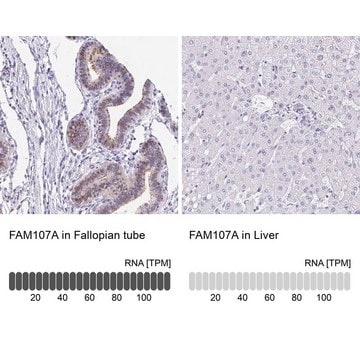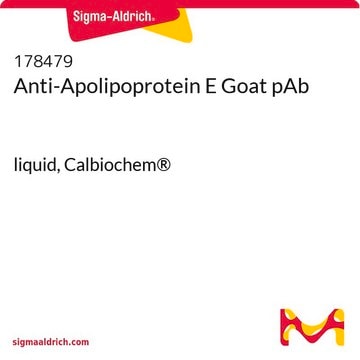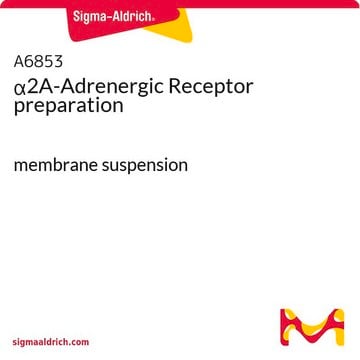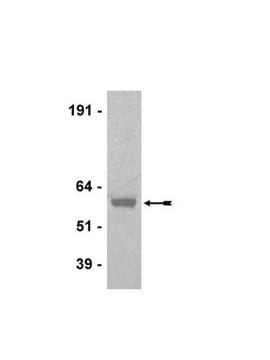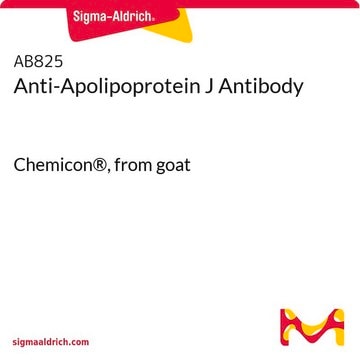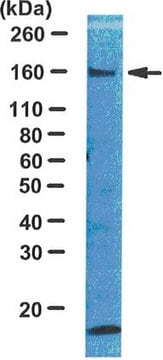AB947
Anti-Apolipoprotein E Antibody
serum, Chemicon®
Synonym(s):
ApoE
Sign Into View Organizational & Contract Pricing
All Photos(1)
About This Item
UNSPSC Code:
12352203
eCl@ss:
32160702
NACRES:
NA.41
Recommended Products
biological source
goat
Quality Level
antibody form
serum
antibody product type
primary antibodies
clone
polyclonal
species reactivity
primate, human
manufacturer/tradename
Chemicon®
technique(s)
immunohistochemistry: suitable
western blot: suitable
NCBI accession no.
UniProt accession no.
shipped in
dry ice
target post-translational modification
unmodified
Specificity
Monospecific for Apolipoprotein E by immunoelectrophoresis when tested against pooled human plasma and twice concentrated pooled human serum. Reacts with Apo E isoforms E2, E3 and E4 by Western blot.
Immunogen
Recombinant human apolipoprotein E.
application
Detect Apolipoprotein E using this Anti-Apolipoprotein E Antibody validated for use in IH & WB.
Research Category
Metabolism
Metabolism
Research Sub Category
Lipid Metabolism & Weight Regulation
Lipid Metabolism & Weight Regulation
Western blot (Schwab, 1996): 1:1,000-1:2,000
Immunohistochemistry (Summers, 1998; Wisniewski & Frangione, 1992; Schwab, 1996)
Optimal working dilutions must be determined by the end user.
Immunohistochemistry (Summers, 1998; Wisniewski & Frangione, 1992; Schwab, 1996)
Optimal working dilutions must be determined by the end user.
Target description
34 kDa
Physical form
Delipidated goat antiSerum, 0.2 μm filtered. Liquid in Tris-saline, pH 7.4 with 0.1% sodium azide as preservative.
Unpurified
Storage and Stability
Maintain for 1 year at -20°C from date of shipment. Aliquot to avoid repeated freezing and thawing. For maximum recovery of product, centrifuge the original vial after thawing and prior to removing the cap.
Analysis Note
Control
Liver tissue
Liver tissue
Legal Information
CHEMICON is a registered trademark of Merck KGaA, Darmstadt, Germany
Disclaimer
Unless otherwise stated in our catalog or other company documentation accompanying the product(s), our products are intended for research use only and are not to be used for any other purpose, which includes but is not limited to, unauthorized commercial uses, in vitro diagnostic uses, ex vivo or in vivo therapeutic uses or any type of consumption or application to humans or animals.
Not finding the right product?
Try our Product Selector Tool.
Storage Class
12 - Non Combustible Liquids
wgk_germany
WGK 1
flash_point_f
Not applicable
flash_point_c
Not applicable
Certificates of Analysis (COA)
Search for Certificates of Analysis (COA) by entering the products Lot/Batch Number. Lot and Batch Numbers can be found on a product’s label following the words ‘Lot’ or ‘Batch’.
Already Own This Product?
Find documentation for the products that you have recently purchased in the Document Library.
Observations in APP bitransgenic mice suggest that diffuse and compact plaques form via independent processes in Alzheimer's disease.
Lord, A; Philipson, O; Klingstedt, T; Westermark, G; Hammarstrom, P; Nilsson, KP; Nilsson, LN
The American Journal of Pathology null
The association of hepatitis C virus glycoproteins with apolipoproteins E and B early in assembly is conserved in lipoviral particles.
Boyer, A; Dumans, A; Beaumont, E; Etienne, L; Roingeard, P; Meunier, JC
The Journal of Biological Chemistry null
Ronald D Gorham et al.
Journal of medicinal chemistry, 58(2), 814-826 (2014-12-11)
Compstatin peptides are complement inhibitors that bind and inhibit cleavage of complement C3. Peptide binding is enhanced by hydrophobic interactions; however, poor solubility promotes aggregation in aqueous environments. We have designed new compstatin peptides derived from the W4A9 sequence (Ac-ICVWQDWGAHRCT-NH2
Differential regulation of amyloid-? endocytic trafficking and lysosomal degradation by apolipoprotein E isoforms.
Li, J; Kanekiyo, T; Shinohara, M; Zhang, Y; LaDu, MJ; Xu, H; Bu, G
The Journal of Biological Chemistry null
USE OF FUSED CIRCULATIONS TO INVESTIGATE THE ROLE OF APOLIPOPROTEIN E AS AMYLOID CATALYST AND PERIPHERAL SINK IN ALZHEIMER'S DISEASE.
Nilsson, LN; Gografe, S; Costa, DA; Hughes, T; Dressler, D; Potter, H
Technology and innovation null
Our team of scientists has experience in all areas of research including Life Science, Material Science, Chemical Synthesis, Chromatography, Analytical and many others.
Contact Technical Service